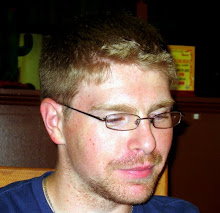America: Reality and Dreams
On the days of a soft breeze and purifying sunshine, the American flag stands, as it has in times past in rain, winds, and the light of wintry skies and the glare of bombs in flight.
When I reflect upon the glory of this flag, I am reminded of the men and women who lie beneath it due to the past wars of a nation struggling to find an identity. The identity of the nation emerged from the identity of its people: diverse, colorful, intelligent, spirited, entrepreneurial, optimistic, fortitudinous.
When I come to my feet to recite the pledge, I cannot deny the patriotic image of a battle in some distant land where the flag of liberty waves high above the blood drenched earth, where one’s countrymen stand as one’s brothers.
When I see the American flag, I see the good guy. The one, on the playground of the international landscape, who will stand for his convictions, who assists those in need, who gives continuously to those without, who will rise up against the recess bully in defense of others, as well as himself, then says, extending a hand, “let us talk this over, let us find a better way.”
Men stand before it as citizens, men salute before it as patriots, men marry with it as witness, men lie beneath it as soldiers.
The American flag is not just some piece of cloth. It is the symbol of all that the American way embodies. The American flag above any other symbol is the purest representation of us, the citizens of the freest society that this planet has ever known.
When a group assembles on the steps of a courthouse and burns the American flag, I witness, embracing two conflicting emotions. Firstly, to clap, to dance, to sing, all because a government, a nation can withstand the freedom of its people. Secondly, to bow my head, to hold my face, to wipe my tears, all for, in my opinion, the misinterpretation of whom, not what, the flag represents.
The flag embodies the wonders of the American citizens, not a particular administration. The burning of it becomes a statement against oneself, not the government officials.
The American soldier drapes his or herself in the colors of the flag, so I can be draped in the liberty of a great Republic.
If all I described seems romantically dated, overtly hopeful, possibly delusional, or simplistically innocent then I urge you to re-evaluate your views of this nation and its beloved symbol. We, as Americans, need to evoke positive perceptions, because without the purity of and advancement towards truth of our nation, we settle, then, for a jaded reality of the world.
If, to others, I describe a nation steeped in timelessness, honor, pride, and all the beloved clichés then I beg of you to step down to meet the world at large. We, as Americans, live in the proverbial Ivory Tower, locked away from the reality of the world. Furthermore, within doing so, we attend to lose sight of the actualities of the rest of the world.
More directly, anyone who rails against all the good America does by only focusing on its errors hinders his or herself from actually progressing the nation to the next level. Yet, on the other side, anyone who avoids the shortcomings of America by only emphasizing the good deeds blinds his or herself from the harshness that mobility is quintessential and must continue upward.
America
America
This week's column was thrown together last minute. I have had exams this week and I got behind in class readings, so I have been trying franticly to catch up before my paper was due. This topic is basically a simple idea: paint a noble America and then people who disagree that they are slowing progress. Yet, the people who agree have no great knowledge of the world beyond the shorelines. I can picture Leonardo da Vinci doing the same thing with the Mona Lisa, yet my own happens to be the American flag.

